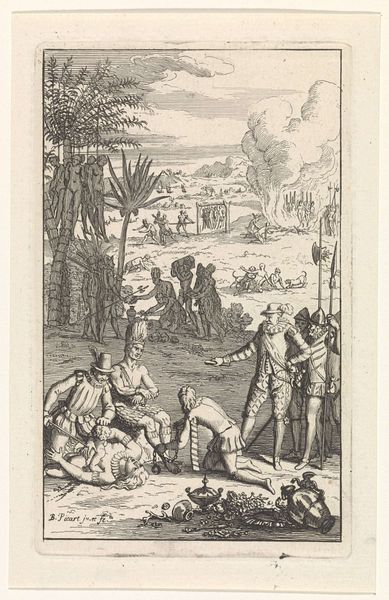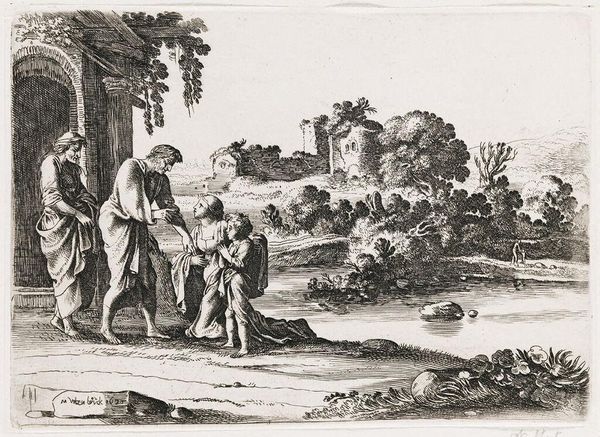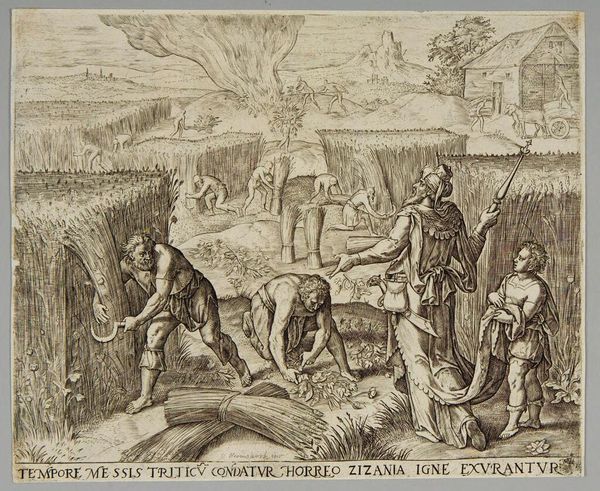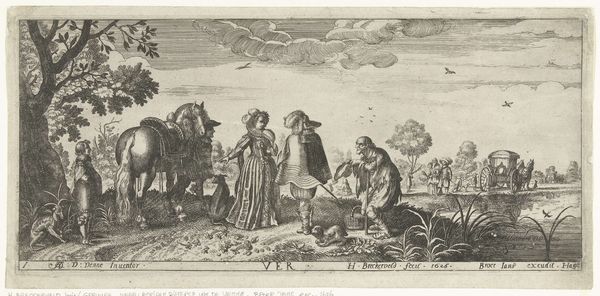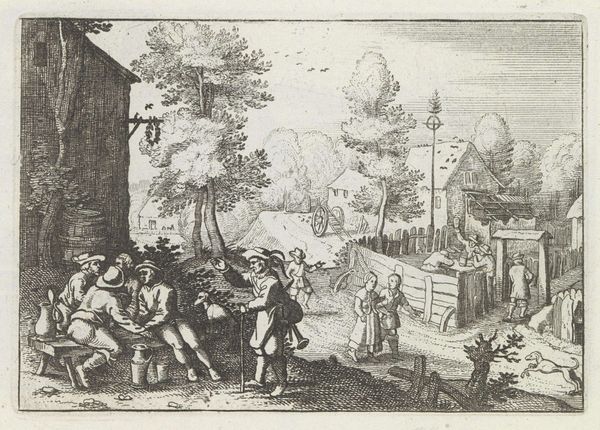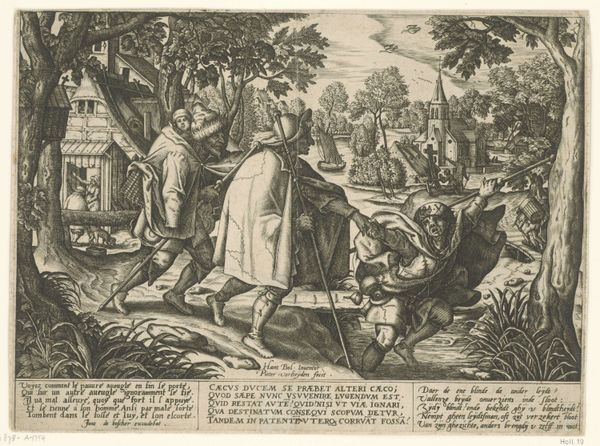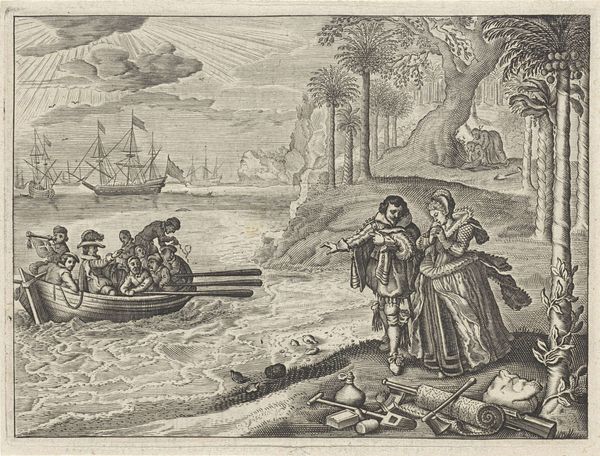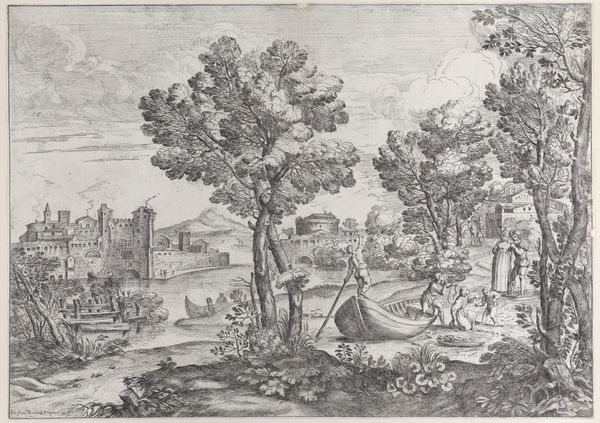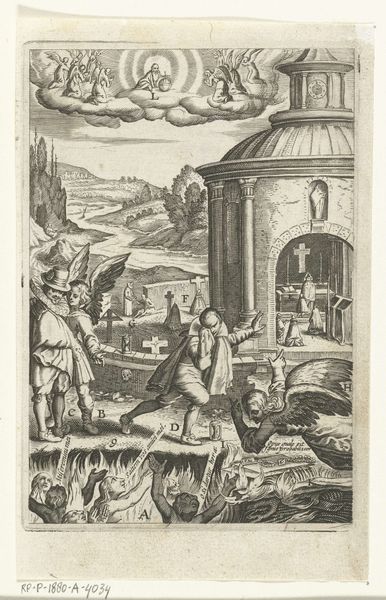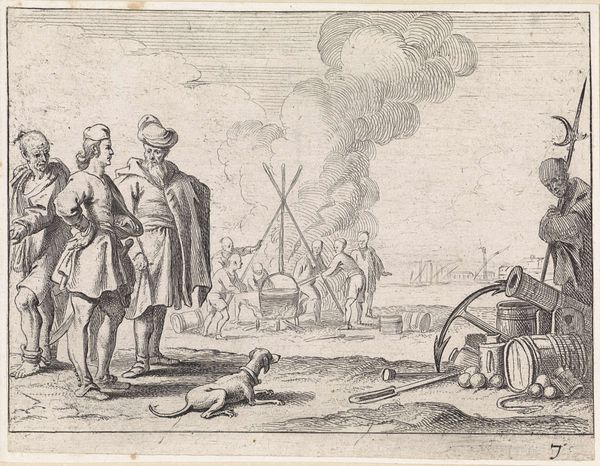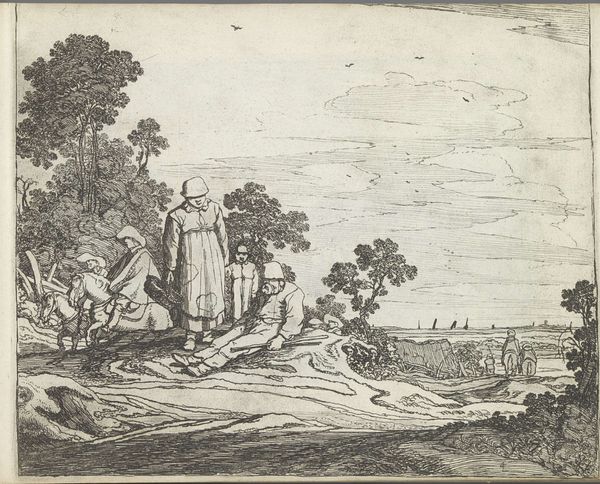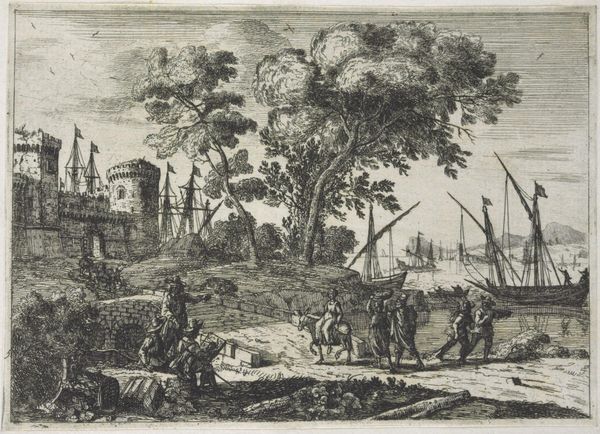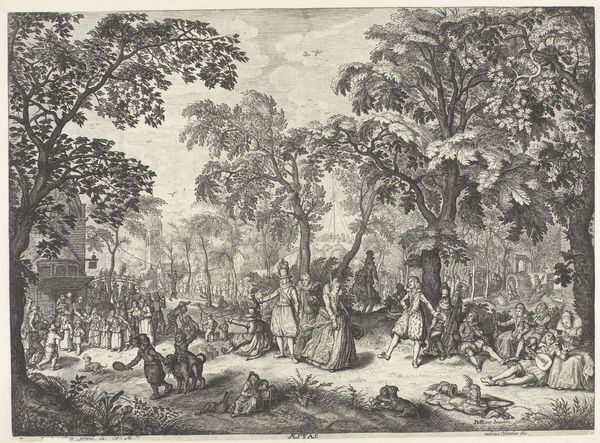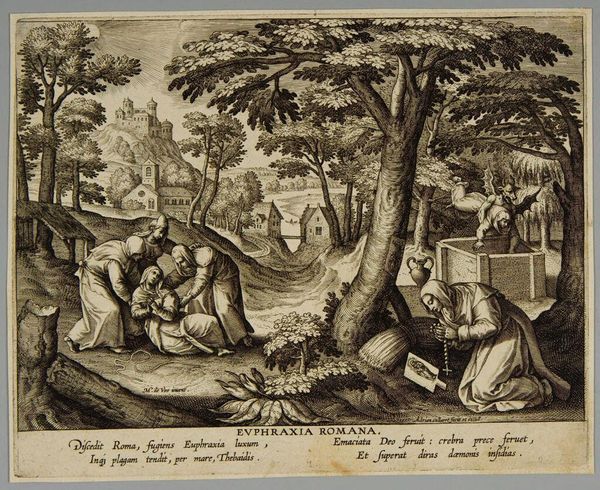
Spotprent op de problemen tussen Engeland en Amerika en Holland, ca. 1780 1780
0:00
0:00
anonymous
Rijksmuseum
print, etching, engraving
#
narrative-art
# print
#
etching
#
landscape
#
cityscape
#
history-painting
#
engraving
Dimensions: height 204 mm, width 308 mm
Copyright: Rijks Museum: Open Domain
Curator: This etching, created around 1780 by an anonymous artist, is entitled "Spotprent op de problemen tussen Engeland en Amerika en Holland," which translates to "Print on the problems between England and America and Holland." It’s part of the collection at the Rijksmuseum. Editor: My goodness, what a crowded scene! At first glance, it feels like a theatrical performance… staged on the world stage, perhaps? Curator: Precisely. These prints, often cheaply produced and widely circulated, were vital tools for shaping public opinion. Notice the meticulous detail achieved through the engraving and etching techniques; the fine lines would have allowed for multiple reproductions and accessible distribution. The narrative is obviously propagandistic; note all the symbolic characters placed so carefully. Editor: Oh, certainly! I spot figures resembling puppets and the fellow in the tent fiddling nervously with his fingers, perhaps symbolizing manipulation and unease within government or trade. The cannon fire is the American Revolution, and the other items are all damaged—indicating commercial troubles for the Dutch with trading to America through England’s regulations. It makes me think of old political cartoons we see today but translated for this medium and era. Curator: Exactly. The social context is key: Anglo-Dutch relations were strained by the Dutch Republic's involvement in trade with the rebellious American colonies, something that England considered a hostile act. Editor: I wonder, though…was the average citizen of the time aware of all these detailed allegories? It feels like a sophisticated visual language. Curator: Some would have been, definitely. The meaning would be shaped by where the viewer fell in Dutch society. Some would require pamphlets describing what these scenes are "actually" depicting, because clearly that cannon is meant to convey real feelings about events that affect pocketbooks and home. Editor: It truly is fascinating how art serves as both a reflection and a shaper of political currents. I almost feel as though I understand a snippet more clearly of the past from taking the time to think with it. Curator: Indeed. And through understanding its means of production and distribution, we gain a deeper understanding of how these narratives shaped that past.
Comments
No comments
Be the first to comment and join the conversation on the ultimate creative platform.
